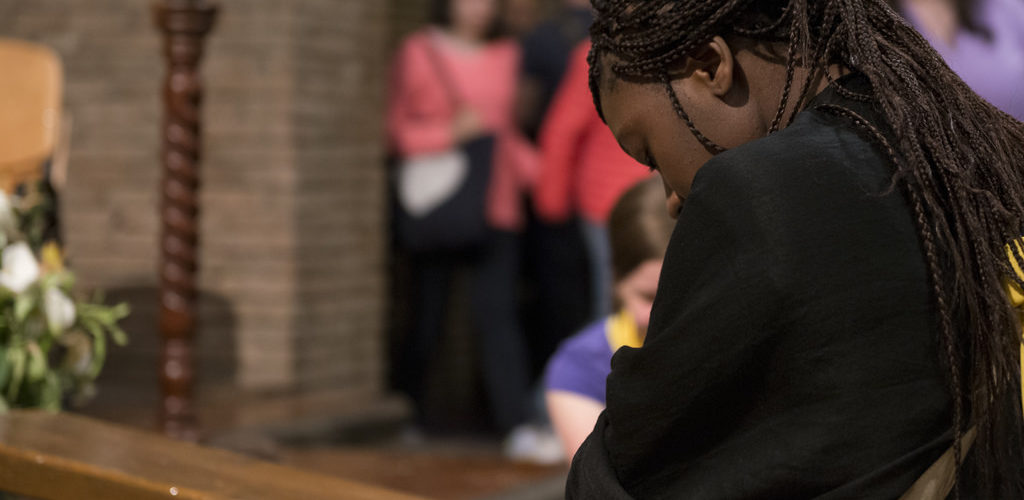Congregations lamenting the dwindling presence of young adults from church and faith often need only to look within for the solutions.
In many cases it isn’t Millennials and younger adults who need to change, said Mark Tidsworth, a congregational and clergy consultant based in South Carolina.

Mark Tidsworth
“After only brief reflection, we see the issue may not actually be Millennials and their preferences,” he wrote in a recent blog post for his ministry, Pinnacle Leadership Associates.
“Instead the issue may be us . . . those of us who are acculturated into the predominant expressions of God’s Church formed during the last half of the 20th century.”
All too often, Millennials are invited to churches where they are expected to conform to decades-old ways of worship and governance, Tidsworth said.
“If we are going to invite people who are members of different generations to be involved in church and we want to make space for them, it means we can’t insist that they do church the way we have always done it,” he told Baptist News Global.
The challenge seems to exist for houses of worship – and Millennials – across religious groups.
The Deseret News in Salt Lake City, Utah, recently published a story titled “10 ways to connect with Latter-day Saint Millennials.” The Denver Catholic reported that parish leaders in that area are trying “to recapture the Millennial generation.”
In an October interview with Baptist News Global, a rabbi said synagogues are bending over backwards to convince Millennials to return to their Jewish roots.
A young adult told BNG earlier this year that being treated like idols makes Millennials feel pandered to and leads many to stay away.
And the anecdotal examples are backed up by the numbers.
Polls and reports about the rise of religious “nones” – those with no religious affiliation – are numerous. Millennials, they have found, are leading that movement.
The Public Religion Research Institute, or PRRI, reported that 39 percent of adults aged 18-29 are in that category. That’s three times the rate of religiously unaffiliated Americans 65 and older.
‘Gimmick red carpet treatment’
One of the inadvisable things churches can do is turn to gimmicks to try to lure young adult Christians through the doors, said Justin Cox, 37, the minister of students at First Baptist Church in Statesville, North Carolina.

Justin Cox
Millennials and other younger adults can readily detect when someone is using “this gimmick red carpet treatment” to get them in or to stay, Cox said.
Besides, abandoning traditional worship for more modern forms isn’t a guarantee because many young people are attracted to liturgy, stained glass and steeples, Cox said.
What Millennials are attracted to is authenticity and the opportunity to make a meaningful contribution to the church.
“There has to be some way the church offers to help people find where their passions lie,” Cox said.
Or, at the least, congregations must be open to letting Millennials create their own avenues for involvement.
“Someone who is 65 doesn’t need to create a young adults ministry,” he said.
That means it isn’t all on the church to make the relationship work, Cox added.
“The responsibility is on both ends,” he said. “The church needs to create space where young people can come in and figure out who they are in that space, and young people need to say, ‘what can I bring to this community?’”
Cultivating new communities
It’s noble and healthy to want to convince young people to come to church, Tidsworth said.
“We want to pass on our faith to the next generation and we believe the of way Jesus is a beautiful and good thing,” he said.
But there are other motivations for many congregations.
“It’s also mixed with institutional concerns, which are buildings and bodies and budgets. And it’s about keeping our church going the way it has in the past.”
What congregations must try to do, Tidsworth said, is to adjust the expression of the church.
That may include restructuring the historic committee-based approach to handling church functions, often with multi-year terms.
“Millennials and other groups are less likely to want to do that,” he said. “They will be involved in a taskforce or a project.”
Congregations can also change their approach to Christian formation in ways more attractive to the lifestyles of younger adults and families, Tidsworth said.
Some churches are replacing traditional Sunday school, which is declining in attendance, with small-group meetings in members’ homes to conduct Christian formation.
Millennials also must be allowed into leadership roles, he said. Inviting them to worship but not to help guide the church doesn’t work for young adults.
In other cases, churches are launching or inviting congregations that cater to young adults. It’s an approach available to groups unwilling to change their own expressions, Tidsworth said.
“It makes more room around Christ’s table,” he said.
Whatever churches do, they must be aware the mid-20th century way of being church holds little appeal for most young adults, Tidsworth said.
“Millennials in general are not interested in membership culture and being members of organizations,” he said.
The truth of that observation is borne out in the statistics.
“Millennials have already indicated that they don’t relate to the cultural models of previous generations,” Tidsworth said. “If churches want to connect with Millennials they either have to be willing to adjust their expression of church and be willing to make some large-scale changes or cultivate new communities.”


